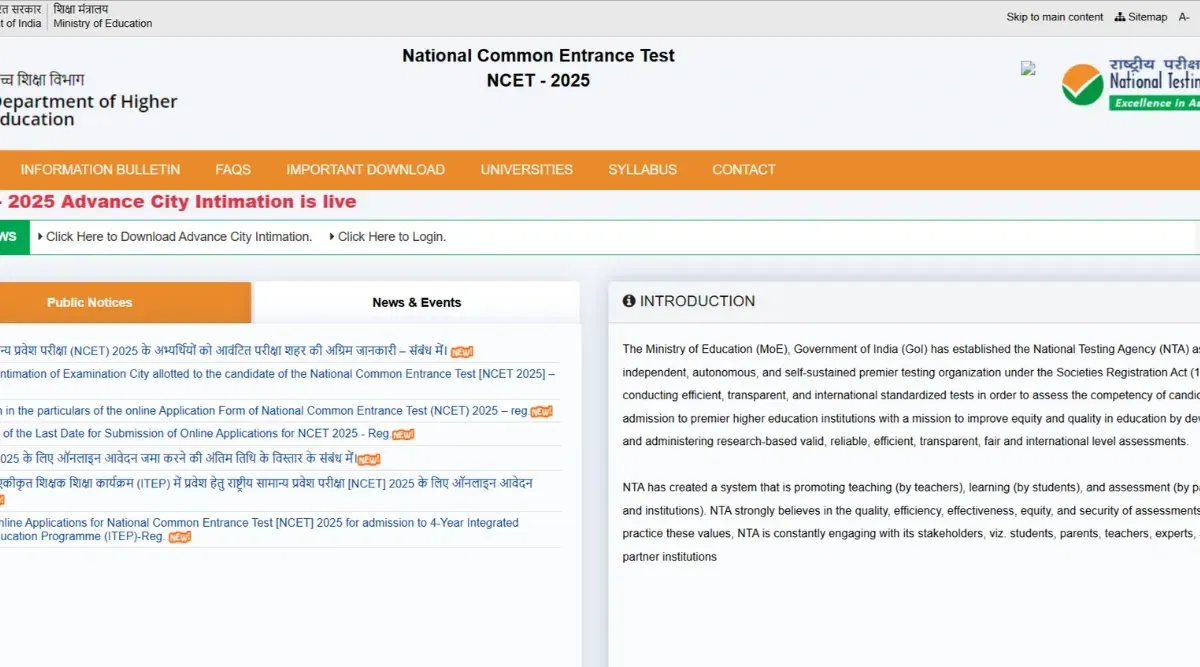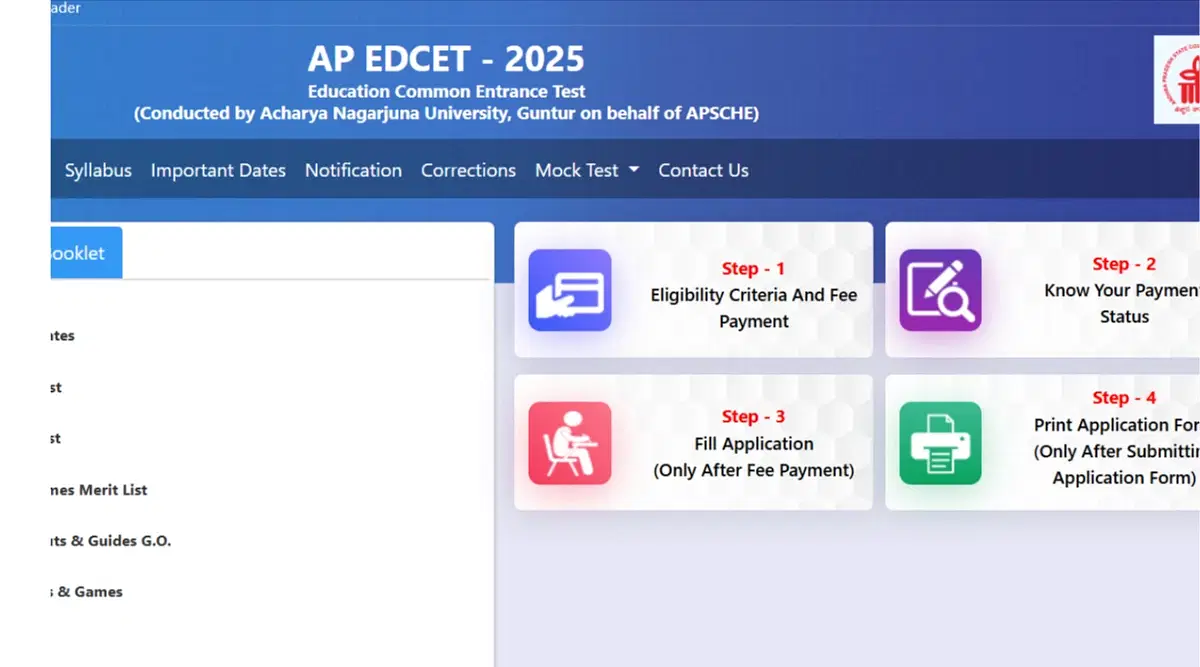CBSE has unveiled the CBSE Class 10 syllabus for the academic year 2024-25, comprising unit-wise topics, marking scheme, practical evaluation details, recommended textbooks, and more.
Table of Contents
The CBSE Class 10 Science syllabus 2024-25 contains five units and includes important chapters such as Chemical Substances, World of Living, Natural Phenomena, Effects of Current, and more. Students must cover all the chapters in the syllabus before appearing for the CBSE Class 10 exam. The exam consists of objective and subjective questions which are allocated throughout the syllabus.
CBSE Class 10 Science 2024-25 syllabus outlines unit-wise chapters, marks distribution, practical information, recommended textbooks, and other essential details. It's crucial for students to thoroughly review the Class 10 Science syllabus to plan their preparation strategy effectively for both internal assessments and annual board exams.
CBSE Class 10 Science Syllabus 2024-25: Download PDF
According to the CBSE Class 10 exam pattern, a total of 100 marks are set for the CBSE Class 10 exam. The first 70 marks are allotted for the theory exam which contains questions from 5 units from the syllabus. The rest of the 30 marks are assigned for the practical exam. Students can get a detailed understanding of the chapters to be covered for the theory and practical exam if they review the CBSE Class 10 Science 2024-25 syllabus in-depth.
The CBSE board has released the CBSE class 10 syllabus for all subjects on the official website. Refer to the table below to get the syllabus in PDF format and check chapter-wise topics.
| Particulars | PDF LInk |
| CBSE 10th Science Syllabus 2024-25 | Download Now |
Also Check: CBSE Class 10 Deleted Syllabus 2024-25
CBSE Class 10 Science Syllabus 2024-25: Marks Distribution
The table below provides the list of all the units involved in the CBSE class 10th Science syllabus 2024-25. The marks allotted for each unit, along with the lectures required to complete the syllabus are also mentioned.
| Exam | Unit | Marks |
| Theory Exam | Chemical Substances-Nature and Behaviour | 25 |
| World of Living | 23 | |
| Natural Phenomena | 12 | |
| Effects of Current | 13 | |
| Natural Resources | 07 | |
| Internal assessment |
Periodic Test | 10 |
| Notebook Submission | 5 | |
| Subject Enrichment Activity | 5 |
Also Check: CBSE Class 10th Science Textbook
Unit-Wise List of Chapters in CBSE Class 10 Science Syllabus 2024-25
Students can have a detailed look at the CBSE Class 10th Science 2024-25 syllabus and know the sub-topics for each chapter under 5 units. Each theme is included under different themes such as Materials, The World of the Living, Natural Phenomena, How Things Work, Natural Resources, etc.
Check out the table below for more information regarding units, chapters, and subtopics.
| Chapter | Topics |
| Unit I: Chemical Substances - Nature and Behaviour | |
| Chemical reactions | Chemical equation |
| Balanced chemical equation | |
| Implications of a balanced chemical equation | |
| Types of chemical reactions | |
| Acids, Bases, and Salts |
Their definitions in terms of furnishing of H+ and OH– ions |
| General properties, examples, and uses | |
| Neutralization, concept of pH scale (Definition relating to logarithm not required) | |
| Importance of pH in everyday life | |
| Preparation and use of Sodium Hydroxide | |
| Bleaching powder, Baking soda, Washing soda, and Plaster of Paris. | |
| Metals and Non-Metals | Properties of metals and non-metals; Reactivity series |
| Formation and properties of ionic compounds | |
| Basic metallurgical processes | |
| Corrosion and its prevention. | |
| Carbon Compounds |
Nomenclature of carbon compounds containing functional groups (halogens, alcohol, ketones, aldehydes, alkanes and alkynes) |
| The difference between saturated hydrocarbons and unsaturated hydrocarbons. | |
| Chemical properties of carbon compounds (combustion, oxidation, addition, and substitution reaction). | |
| Ethanol and Ethanoic acid (only properties and uses), soaps, and detergents. | |
| Unit II: World of Living | |
| Life processes | ‘Living Being’. The basic concept of nutrition |
| Respiration | |
| Transport and excretion in plants and animals |
|
| Control and coordination in animals and plants | Tropic movements in plants |
| Introduction of plant hormones | |
| Control and coordination in animals | |
| Nervous system | |
| Voluntary, involuntary, and reflex action | |
| Chemical coordination | |
| Animal hormones | |
| Reproduction | Reproduction in animals and plants (asexual and sexual) reproductive health |
| Need and methods of family planning | |
| Safe sex vs HIV/AIDS. Childbearing and women’s health. | |
| Heredity and Evolution | Basic concepts of evolution |
| Unit III: Natural Phenomena | |
| The Human Eye and the Colourful World | Reflection of light by curved surfaces |
| Refraction of light by spherical lens | |
| Functioning of a lens in the human eye | |
| Unit IV: Effects of Current | |
| Magnetic Effects of Current | Electric Generator, Direct current. |
| Alternating current: frequency of AC, Advantage of AC over DC. | |
| Domestic electric circuits | |
| Unit V: Natural Resources | |
| Sources of Energy | Various forms of energy |
| Conventional and non-conventional sources of energy: fossil fuels, solar energy | |
| Biogas | |
| Wind, water, and tidal energy | |
| Nuclear Energy. | |
| Renewable versus non-renewable sources of energy. | |
| Management of Natural Resources | Conservation and judicious use of natural resources. |
| Forest and wildlife | |
| Coal and Petroleum conservation. | |
| Examples of people's participation in the conservation of natural resources. | |
| Big dams: advantages and limitations; alternatives, if any. | |
| Water harvesting. Sustainability of natural resources. | |
Also Read: CBSE Class 10th CBSE Science Sample Paper
CBSE Class 10 Science Syllabus 2024-25 for Practicals
The complete CBSE 10th Science 2024-25 syllabus for practicals has been provided below for the reference of students.
- Separation of the components of a mixture of sand, common salt, and ammonium chloride (or camphor).
- Determination of the melting point of ice and the boiling point of water.
- Verification of the Laws of reflection of sound.
- Determination of the speed of a pulse propagated through a stretched string/slinky (helical spring).
- Study of the characteristics of Spirogyra, Agaricus, Moss, Fern, Pinus (either with male or female cone), and an Angiospermic plant. Draw and give two identifying features of the groups they belong to.
- Observe the given pictures/charts/models of earthworms, cockroaches, bony fish, and birds. For each organism, draw their picture and record: a) one specific feature of its phylum. b) one adaptive feature regarding its habitat.
- Study the external features of the root, stem, leaf, and flower of monocot and dicot plants.
Also Read: CBSE Class 10th Science Important Questions
Tips and Tricks to Score Well in CBSE Class 10th Science Exam
Students can follow these tips and tricks to score good marks in the CBSE class 10th science exam. In addition, it will help them to prepare for their exams effectively:
- Always go through the notes. It will help you during studying, in addition to learning from books.
- Clear any doubts, write down your doubts, and write down their explanation in your own words.
- Create a list of essential formulas and go through them twice a day.
- Understand the basic concepts before remembering their details.
- Don't memorize answers. Write it in your own words.
- Keep practicing diagrams neatly, as labeled diagrams are scoring.
- Make a study schedule and stick to it as much as possible.
Also Read: CBSE Class 10 Science Paper Analysis 2024






















POST YOUR COMMENT